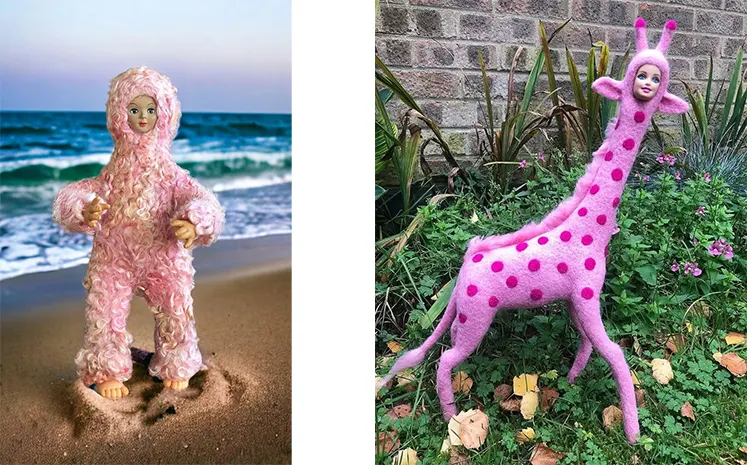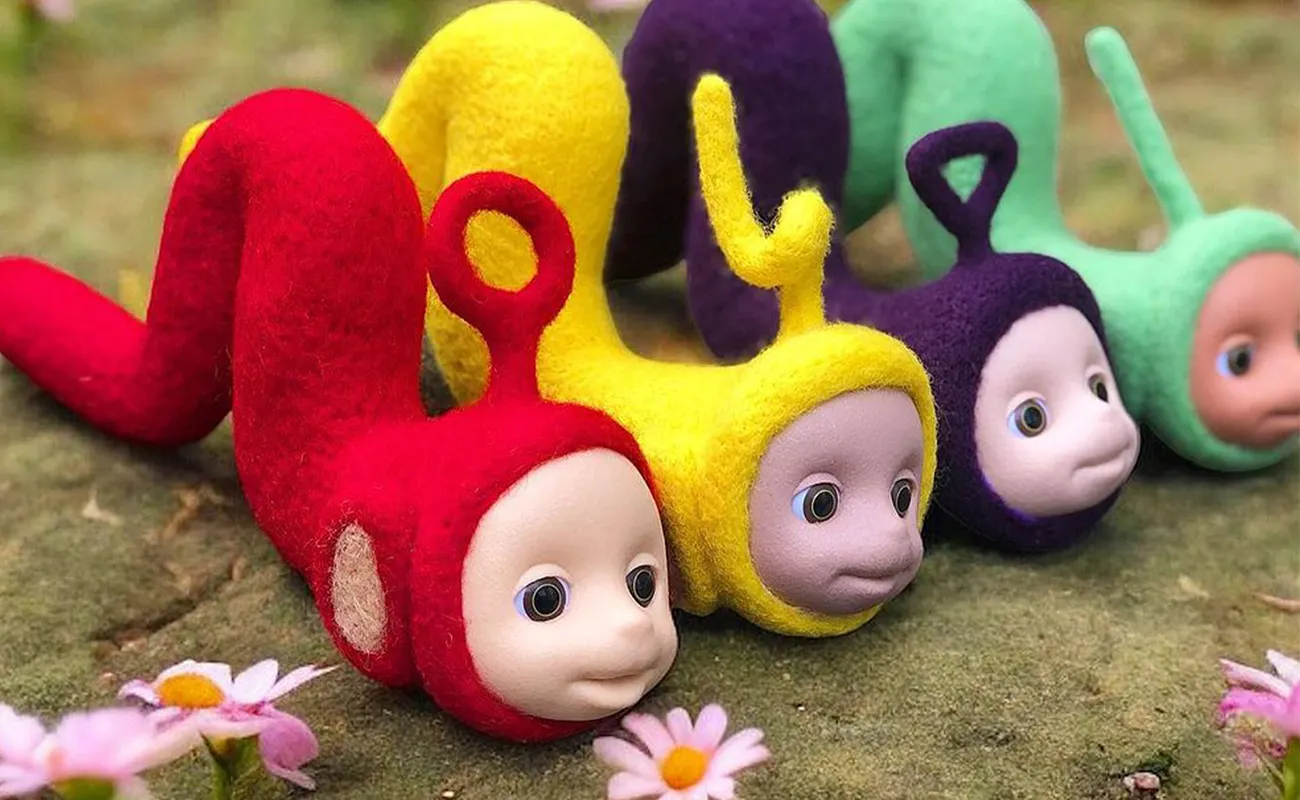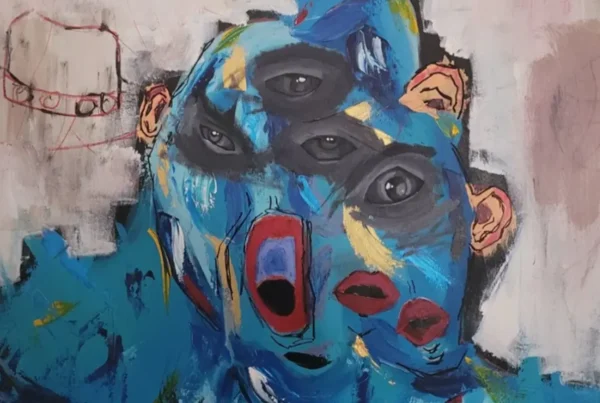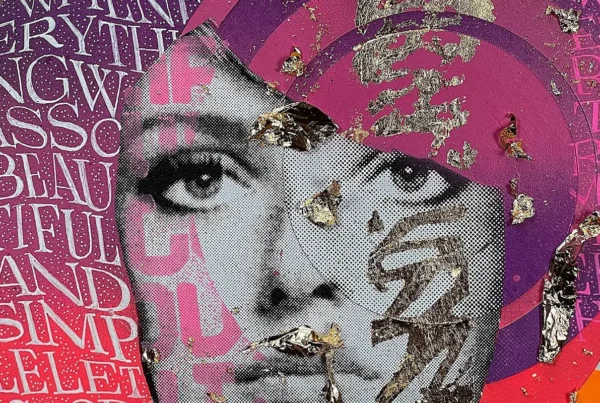Collecting the Unloved: A Journey from Childhood Treasures to Artistic Expression
Amy Coleslaw, the creative force behind I Felt Kitsch, has carved out a unique space in contemporary mixed-media art by transforming discarded toys into felted sculptures that balance whimsy and eeriness. Her work, infused with 90s nostalgia and an offbeat sense of humor, challenges the disposable nature of modern consumer culture. Through her playful yet unsettling creations, she breathes new life into forgotten objects, reshaping them into surreal art pieces that captivate and intrigue.
Coleslaw’s artistic inclinations trace back to her childhood, which was filled with an insatiable passion for collecting. Whether it was troll dolls, marbles, or even pet snails in a lunchbox, she found beauty in the small, overlooked things. Her fascination with nature and oddities extended to rescuing an injured stag beetle with her sister, hiding it under their bed in an attempt to nurse it back to health. While school felt restrictive and uninspiring, art was the one subject where she felt truly free. She pursued Fine Art in college before enrolling in a Book Arts and Crafts program at London College of Communication, but ultimately, the rigid structure of academia didn’t suit her. Instead, she chose a path of exploration, traveling and allowing her creativity to develop organically outside of institutional constraints.
It wasn’t until 2017 that she discovered needle felting, an encounter that would redefine her artistic direction. A visit to Granville Island Market in Vancouver introduced her to a needle felt artist whose work sparked an immediate fascination. Drawn to the sculptural possibilities of the medium, she returned home eager to experiment. With the help of YouTube tutorials and trial and error, she refined her technique, initially creating pet portraits for friends and family. However, it was during the pandemic—when furlough granted her an unexpected abundance of time—that her work truly evolved. Free to explore without pressure, she developed the distinct aesthetic that now defines I Felt Kitsch.
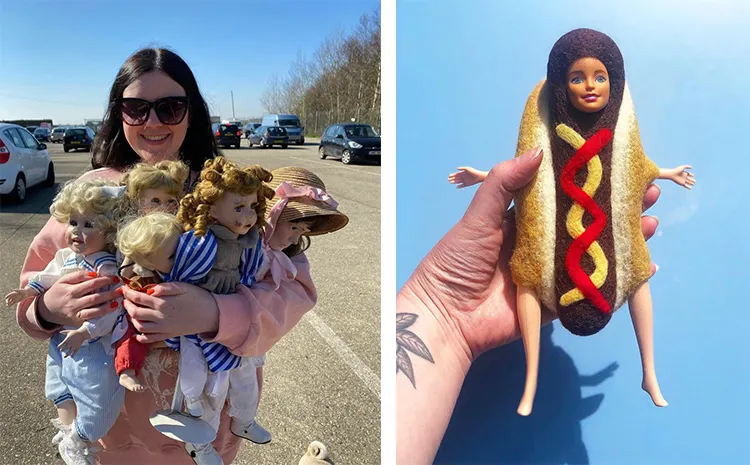
Amy Coleslaw: Reimagining 90s Pop Culture with a Twisted Charm
For Coleslaw, the 90s was an era brimming with surreal and eccentric imagery, a perfect foundation for her signature aesthetic. As a child of the late 80s and early 90s, she was immersed in the vibrant, slightly bizarre world of children’s television and toys. Shows like Teletubbies, Barney, and the infamous chaos of Mr. Blobby left a lasting impression, their strange yet endearing qualities influencing the playful yet unsettling tone of her work. Her creations sit in that peculiar space where nostalgia meets distortion—familiar yet slightly off-kilter, comforting yet vaguely eerie.
A significant inspiration behind her approach is the work of painter Mark Ryden, known for his hauntingly saccharine compositions that blend innocence with an underlying sense of unease. Like Ryden, Coleslaw crafts pieces that blur the line between charm and discomfort, evoking a childlike wonder while also unsettling the viewer. This balance is evident in her most recognizable works, such as the four-scoop ice cream Barbie—a doll head embedded in colorful felted scoops, transforming a mundane toy into something simultaneously absurd and delightful.
Her process is fluid and instinctive, driven more by discovery than rigid planning. Rather than sketching out ideas beforehand, she selects a doll head and allows the piece to evolve organically, letting the face dictate the transformation. Each toy carries its own history, and through felting, she reinterprets that past into something new and unexpected. This spontaneity not only keeps her work fresh but also reinforces the narrative of renewal and repurposing at the heart of I Felt Kitsch.

Breathing New Life into Forgotten Toys: The Art of Reinvention
Sourcing materials is an adventure in itself for Coleslaw. Rather than purchasing pristine supplies, she seeks out discarded dolls, often stumbling upon them in charity shops, car boot sales, and even abandoned on the streets. Some have been rescued from bins behind thrift stores, a testament to her commitment to reclaiming and reimagining the overlooked. There’s a poetic quality to this practice—giving a second life to objects once cherished but ultimately deemed disposable.
Each doll head she collects carries its own silent story, and by embedding them within felted forms, she rewrites that narrative. Her work questions the transient nature of consumer goods, particularly within childhood culture, where toys that once held deep emotional significance are quickly discarded in favor of the next trend. By transforming these remnants of the past into new and captivating forms, she invites viewers to reconsider their relationship with nostalgia and material waste.
Her ability to merge sustainability with artistic vision extends beyond sculpture. Recognizing the growing interest in her designs within the tattoo community, she introduced tattoo vouchers—a system that allows individuals to purchase the rights to use her artwork for ink. This initiative stemmed from noticing tattoo artists incorporating her designs into flash sheets, leading her to create a way for both artists and clients to engage with her work while supporting her practice. The idea of permanence—of a fleeting, kitschy image becoming an indelible mark on someone’s skin—aligns perfectly with her broader artistic philosophy of finding lasting value in the seemingly transient.
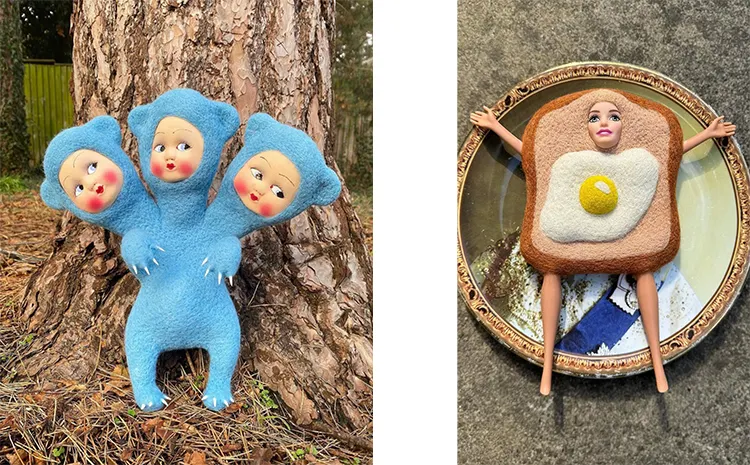
Amy Coleslaw: Expanding the World of I Felt Kitsch
As I Felt Kitsch continues to grow, Coleslaw’s work is reaching new audiences beyond the niche of felt sculpture. Her upcoming participation in Textile Junction, an exhibition at Electro Studios in Hastings, marks an exciting opportunity to present her work within the broader textile arts community. Additionally, she has several collaborations in progress, hinting at even more innovative intersections between her aesthetic and other creative disciplines.
The relationship between her work and tattoo culture is another avenue she’s keen to explore further. With a strong following among tattoo artists, she’s considering setting up a stall at a tattoo convention, a move that would allow her to engage directly with a community that shares her appreciation for bold, playful imagery. This crossover into wearable art has already begun through a collaboration with Dynamic Style, her partner’s clothing brand, which has launched a collection of apparel and tote bags inspired by her designs. These expansions signal an exciting evolution, bridging the gap between fine art, fashion, and subculture aesthetics.
At the heart of it all, Coleslaw remains committed to her core artistic message—challenging the seriousness of traditional art while championing sustainability and nostalgia. She encourages audiences to find beauty in the unexpected, to embrace kitsch without hesitation, and to reconsider the value of what society deems disposable. Her work exists in a space where sentimentality meets satire, where the past is both honored and playfully reimagined. Whether through a felted doll head, a tattooed design, or a printed tote bag, I Felt Kitsch continues to invite people into a world where the unloved becomes unforgettable.
